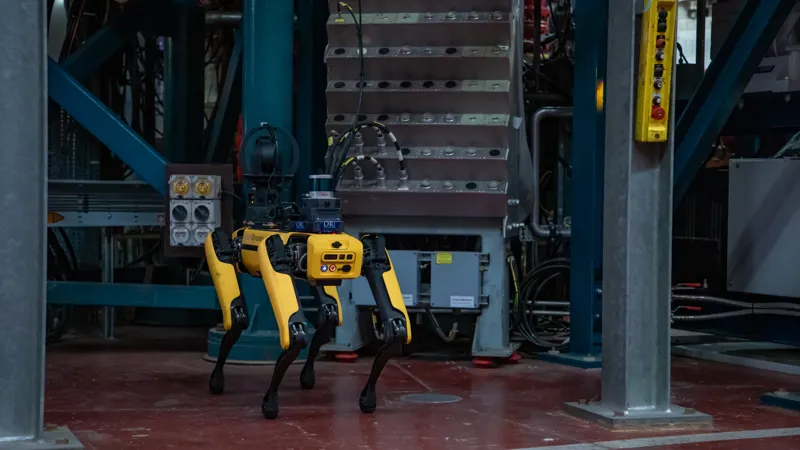In a groundbreaking development for the fusion energy sector, the United Kingdom Atomic Energy Authority (UKAEA) and the Oxford Robotics Institute (ORI) at the University of Oxford have successfully deployed an autonomous robot within a fusion facility for the first time. This significant trial took place over 35 days at UKAEA’s Joint European Torus (JET) facility, which has been recognized as one of the world’s largest and most powerful fusion research machines until its recent operational pause for scientific assessments.
This pioneering initiative marks a crucial step toward making fusion energy commercially viable by demonstrating that autonomous robots can handle maintenance tasks, thereby enhancing safety for human workers and improving cost-efficiency for operators. Regular maintenance is essential for fusion power plants, and historically, robotic inspections have required human intervention for decision-making and operation.
“The primary goal of this project was to validate the reliability of autonomous robotic technology, instilling trust and confidence in its use for safe and efficient inspections in fusion facilities over extended periods,” explained Dr. Robert Skilton, Head of Research at UKAEA’s Remote Applications in Challenging Environments division.
The successful deployment of autonomous robots paves the way for future maintenance and decommissioning processes in fusion facilities, especially in situations where human access may be restricted due to hazardous conditions such as radiation, extreme temperatures, and vacuum-level pressure.
The JET facility provided an ideal environment to test ORI’s autonomy platform, “AutoInspect,” which controlled a Boston Dynamics Spot quadruped robot. This testing occurred in a setting that remained hazardous following two high-powered deuterium-tritium experiments conducted over three years.
“This deployment illustrates that autonomous robots can significantly enhance safety while reducing operational costs. These advanced solutions are becoming increasingly applicable in various industrial contexts, including nuclear decommissioning, environmental remediation, and disaster response,” Dr. Skilton added.
During the trial, the robot conducted inspections that involved mapping the entire JET facility, collecting environmental sensor readings, and navigating around obstacles and personnel engaged in the decommissioning process.
To tackle these complex tasks, UKAEA’s inspection payload was seamlessly integrated with ORI’s localization and mission autonomy solutions, developed through collaboration between the research teams led by Professors Nick Hawes and Fallon. This integration was further enhanced by Boston Dynamics’ hardware and collision avoidance technology, augmenting the robot’s capabilities.
The integrated robotic system successfully gathered critical data on the JET environment and its overall status twice daily. This data collection enabled the research team to evaluate the feasibility of replacing human inspections with fully autonomous processes.
Prof. Nick Hawes, a Professor of AI & Robotics at the University of Oxford, commented on ORI’s objectives for the project: “This project highlights the tremendous potential of autonomous robots—machines that can operate independently without direct human control. It grounds our scientific efforts in real-world applications and provides the requirements and challenges that drive innovation in AI and robotics algorithms.”
ORI’s contributions to this project were supported by the Engineering and Physical Sciences Research Council through the Embodied Intelligence: From Sensing to Collaboration programme grant, which focuses on developing autonomous systems that enhance human capabilities and potential.
The insights gained from this trial will play a vital role in planning the next phases of the JET decommissioning and repurposing (JDR) programme.

